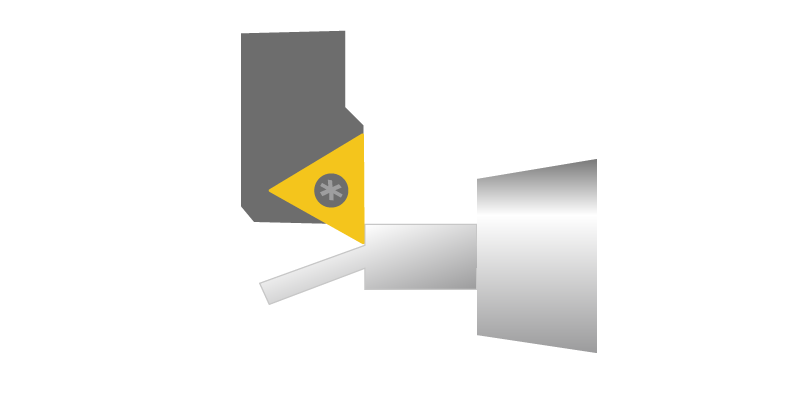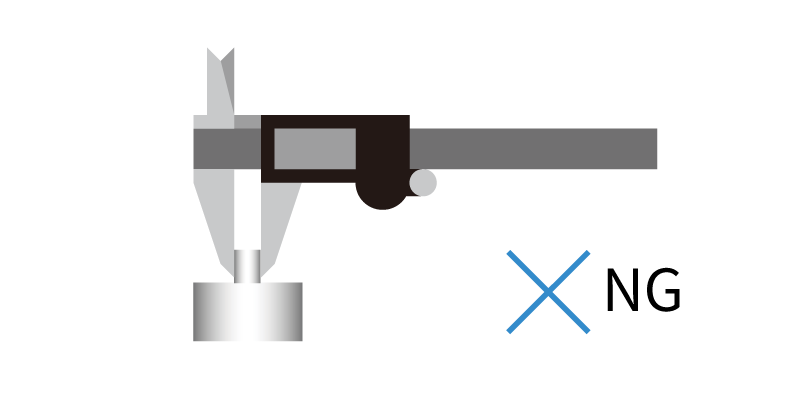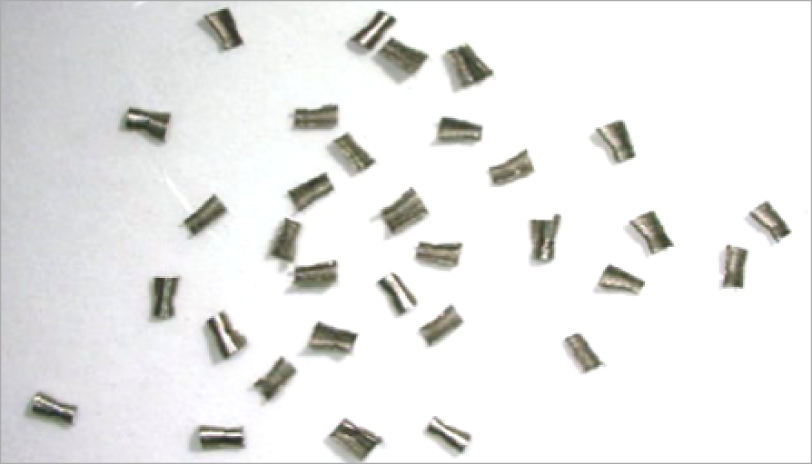Have you experienced these problems in your day-to-day machining ?
There are a variety of possible causes, but in this column, from the viewpoint of “chip control”, we will introduce tips for solving workpiece defects.
Let’s look at the chips.
What did the chips look like after machining and you experienced a problem with workpiece damage or poor workpiece dimensioning?
Were there any broken chips like “A” ?
These chip pieces may be a clue to the causes of poor workpiece dimensions and damage.
What is the effect of chip breakers on the occurrence of issues with workpiece dimensions and damage?
[ Click screen to play ]
This is a machining image with a chip breaker designed for the purpose of dividing chips.
You can see that the chips are broken on the uneven design of the rake surface.Therefore, it is possible to prevent chips tangling on the workpiece and holder, and ensuring stable machining. However, there is one problem.
The figure below shows how it works to break chips.
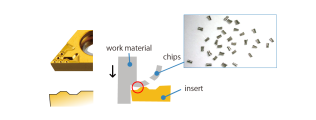
By guiding the chip over the uneven rake surface near the cutting edge, it is forcibly twisted and divided. Inevitably, the cutting resistance increases and the load on the workpiece increases. As a result, it may cause workpiece damage or dimensional issues.
So what should we do?
What are NTK’s tips for chip control to prevent workpieces breakage and poor workpiece dimensions ?
[ Click screen to play ]
This is a machining video of NTK’s CL chip breaker.
The CL chip breaker is designed to curl chips while controlling rather than dividing them, and the chips are evacuated in curls along the rake surface.
The chip evacuation direction needs to be considered for curled chips to prevent tangling on the holder, etc.
Cutting resistance can be minimized by guiding the chips without dividing them.
The figure below shows how the chips are evacuated in a curl shape.
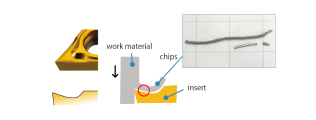
Since the cutting resistance is reduced due to the effect of the rake angle applied to the chip, the load on the workpiece is also reduced, and it can be expected to reduce the occurrence of workpiece dimension defects and damage.
For CNC automatic lathe machining applications, where the diameter of the workpiece to be machined is small and high-precision is required, NTK believes that it is important not to break the chips, but to keep the cutting resistance low and control the shape and evacuation direction of the chips to prevent issues.
Summary
In this column, we discussed the tips for solving workpiece damage and dimensional defects in CNC automatic lathe machining from the viewpoint of “chip control”.
In the case of workpieces with large diameters and machining with low cutting conditions, a chip breaker that breaks the chip may be more suitable.
It is important to run the chip breaker according to the machining application and situation; following given cutting parameters.
NTK offers a lineup of chip breakers for a variety of machining applications. Please contact us if you have any issues with machining and we will be happy to provide technical support.
[ Click screen to play ]
TFX insert
for outer diameter machining
CL breaker
for outer diameter machining
TBP/TBPA-BM breaker
for back turning
AMX breaker
for outer diameter machining
Mogul bar
for ID machining
CX breaker
for cut-off


